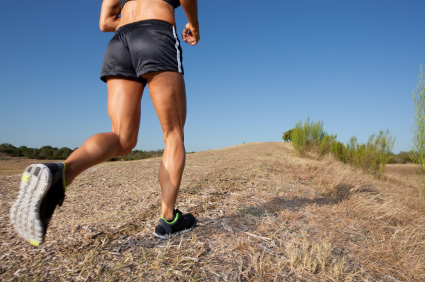Recommended Running Gear

This list aims to target certain items involved with running beyond the basics of what is needed to simply go out and start running. There are certain devices that will help measure your run, improve your personal safety, and help you maintain your personal health.
Measuring your run
Most individuals measure their runs by two factors: time and distance. Combining both of these will give you a highly accurate level of your cardiovascular fitness level. For example, if you ran 3 miles in 25 minutes a month ago, then ran 3 miles in 20 minutes yesterday (assuming it was run on the same course/route), you've improved your time for a specific distance and have proved you are in better shape.
You can measure the time of a run with a simple digital watch. The lighter and more comfortable the watch, the better. Most digital watches offer a stop-watch function where you can click once and the timer starts to increase. Click again to stop it and see how long you have run for.
As for distance, you can use an online mapping program, traverse defined trail paths, or just lock it in on a treadmill. If neither of these options sound appealing, you can always use a pedometer. This device measures the amount of steps you've taken and calculates how much distance you have covered based off that number.
Keep in mind that running uphill takes a substantial amount of more energy and can be considered a part of butt exercises as well as thigh exercises. Consider this when deciding on a distance to run as it can greatly impact the total distance able to be traversed.
Improving your safety
Running on the street or trails can be dangerous during any time period but a few things can make all the difference. First and foremost, do not wear dark clothing. It is hard to see and makes you blend in with your surroundings. If you prefer dark clothing, place some reflective strips on the clothing or wear a vest (the one's that look like what construction workers wear).
Aside from clothing, some people prefer to run with a flashlight in hand. This is a personal preference, though some folks are bothered by holding an object while running and prefer to run without holding anything.
Whenever possible, use a sidewalk to run on. If you must run in the street, run against the flow of traffic so you can see exactly what is coming your way and evade if necessary. It is common strategy to run close to the curb then hop onto the grass when a car is coming at you. This protects you and gives the driver peace of mind by you distancing yourself from the road as they drive by.
Stay hydrated
If you are running outdoors in warm or hot temperatures, try to plan a route that brings you to clean drinking water. Some parks and villages have drinking fountains distributed throughout the area. The fallback solution to not having accessible water is to simply bring a water bottle with. Keep it small and light weight though as a giant jug of water will become quite tedious to run around with. Remember not to chug the water either, take it in slow sips to keep your stomach from becoming upset.




